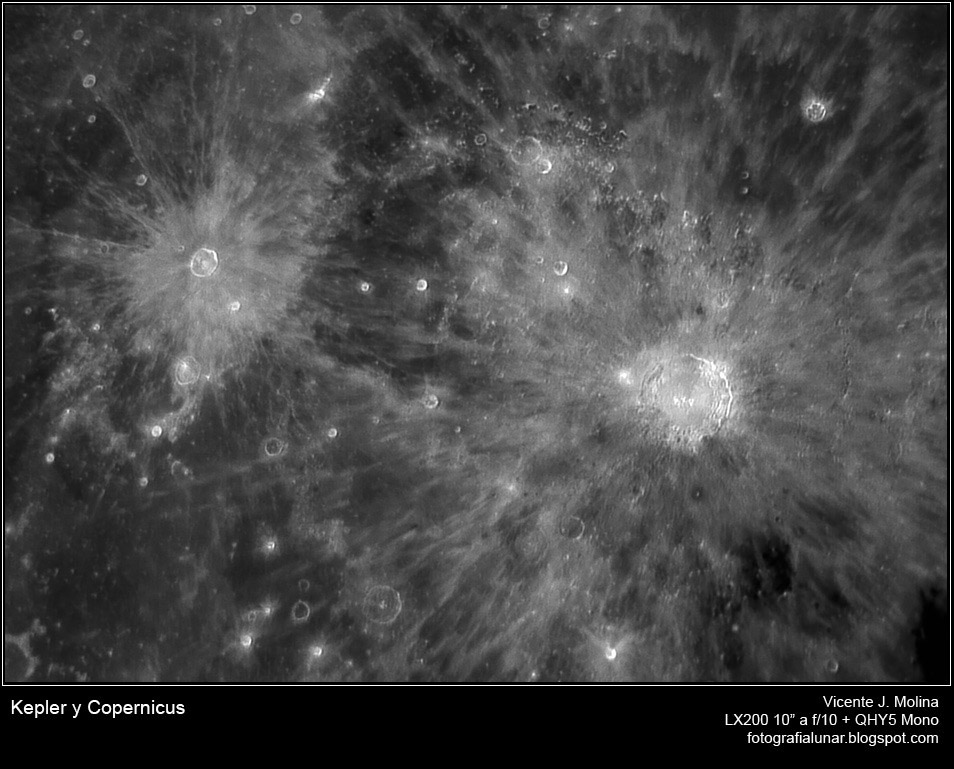February 11, 2018
Light & Dark Musings
Originally published September 1, 2008

image by Vicente J Molina, Spain
Each place on the Moon has two extreme conditions of visibility - near the terminator when topography dominates, and at high Sun when intrinsic reflectivity does. The darkest materials are pyroclastic deposits and mare lavas. Both are lightened over time by being draped with bright ejecta from subsequent impacts. The brightest materials are freshly exposed debris, either pulverized by an impact, or revealed on a slope when older material slides downhill. Any material on the surface will gradually darken because of radiation that causes microscopic blebs of dark iron to coat surfaces. So material on the Moon constantly, but very slowly, evolves towards an intermediate hue of gray. Large scale production of dark material stopped mostly about 3 billion years ago (with some small amounts of lavas erupting up until about 1 to 1.2 b.y ago). Impact cratering continues, so bright material continues to be created, and the radiation darkening also continues. The fact that the Moon still preserves many examples of bright and dark surfaces demonstrates that it is not completely dominated by one process, and that the processes are very slow.
Chuck Wood
Technical Details
08-19-08 at 23:45 UT. Meade LX200 10" Classic at f/10. 96 frames from a video of 200 with a QHY5 monochrome camera on mid-bad seeing night. Processed with Registax4, MaximDL and Photoshop CS2.
Related Links
Vicente's lunar website
PUBLIC SERVICE ANNOUNCEMENT
I just discovered that Hamilton Books seems to have many astronomy books from Cambridge University Press and other publishers on sale, most for less than $10 each, including The New Atlas of the Moon (English edition, $20) and Peter Grego's two Moon guides ($10 & $4). I just ordered 14 books for a total of $97! Unfortunately, the company only ships to US addresses.
Yesterday's LPOD: Seeing & Reporting Thin Crescents
Tomorrow's LPOD: Which Crater is That?
COMMENTS?
Register, Log in, and join in the comments.



